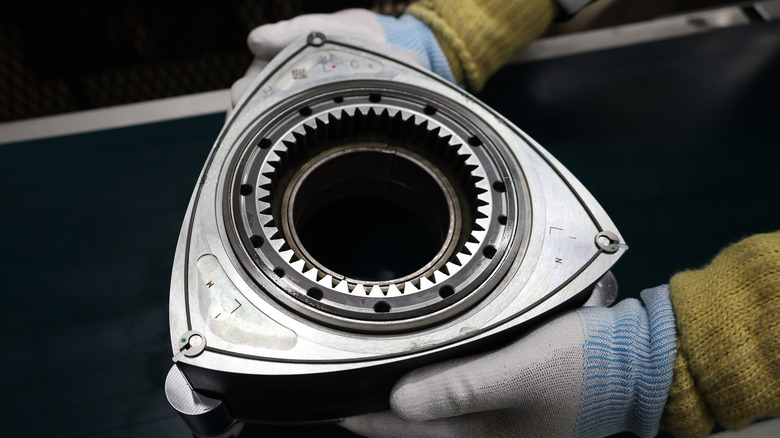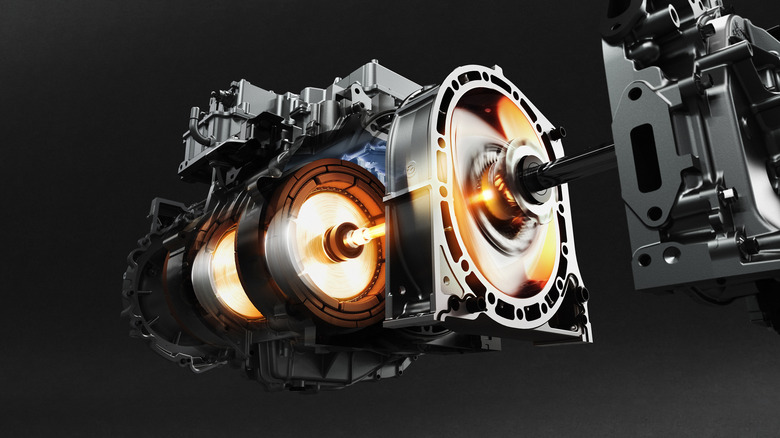Mazda's Iconic Engine Is Back In Production For A Very Different Reason
The rotary engine put Mazda on the map since the engine's debut in 1967, and is fondly remembered by most automotive enthusiasts regardless of what type of car or brand they ascribe to. Everything from the RX-7, to Mazda pickups, to Le Mans prototypes enjoyed rotary power under the hood. Sadly, the last rotary-powered Mazda was the RX-8, which ended production in 2012. However, there is a glimmer of hope for the spinning triangle fan, as the rotary is coming back into full-scale production according to a Mazda press release.
Mazda isn't slapping a rotary into a car and calling it a day — it's coming back in a decidedly environmentally-friendly way as a range extender motor on the plug-in hybrid Mazda MX-30 e-SKYACTIV R-EV. As it stands, Mazda has not announced any plans to bring it to the United States. Production begins today at Mazda's Hiroshima City-based Ujina Plant No. 1, per Mazda.
A rotary-powered future
In practice, the rotary engine will act as a range extender for the MX-30, supplying the necessary power to its electric motors if the battery power runs dry. The European model of the MX-30 e-SKYACTIV R-EV has battery range of just over 50 miles, so the rotary might be working overtime for any drives past a short commute or errand run. Mazda has not released any numbers as to how much driving range is added by rotary power.
As fun as it sounds, bringing back a full rotary-powered production car would be akin to Mazda just lighting a bunch of money on fire. That being said, the range extender allows Mazda to stay true to its roots as one of the original innovators in the world of engine technology, and look forward to the increasingly electrically-driven future.
This also slates into Mazda's plan for a carbon-neutral supply chain by 2050. As such, Mazda installed solar panels at its Hiroshima plant that aid in powering the plant and charging its plug-in hybrids.

